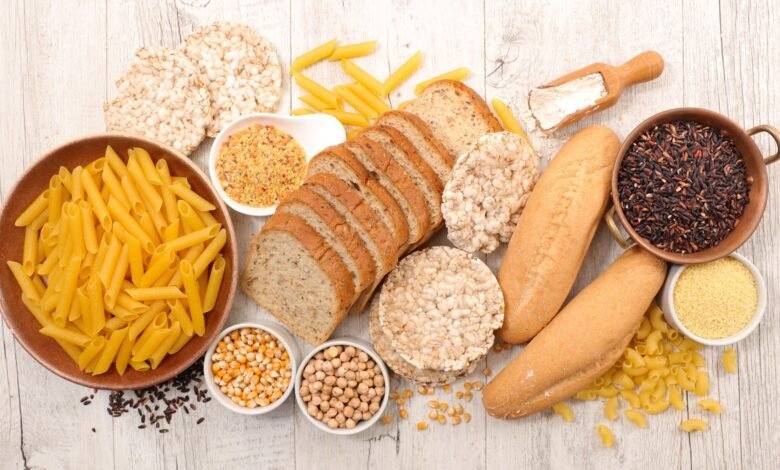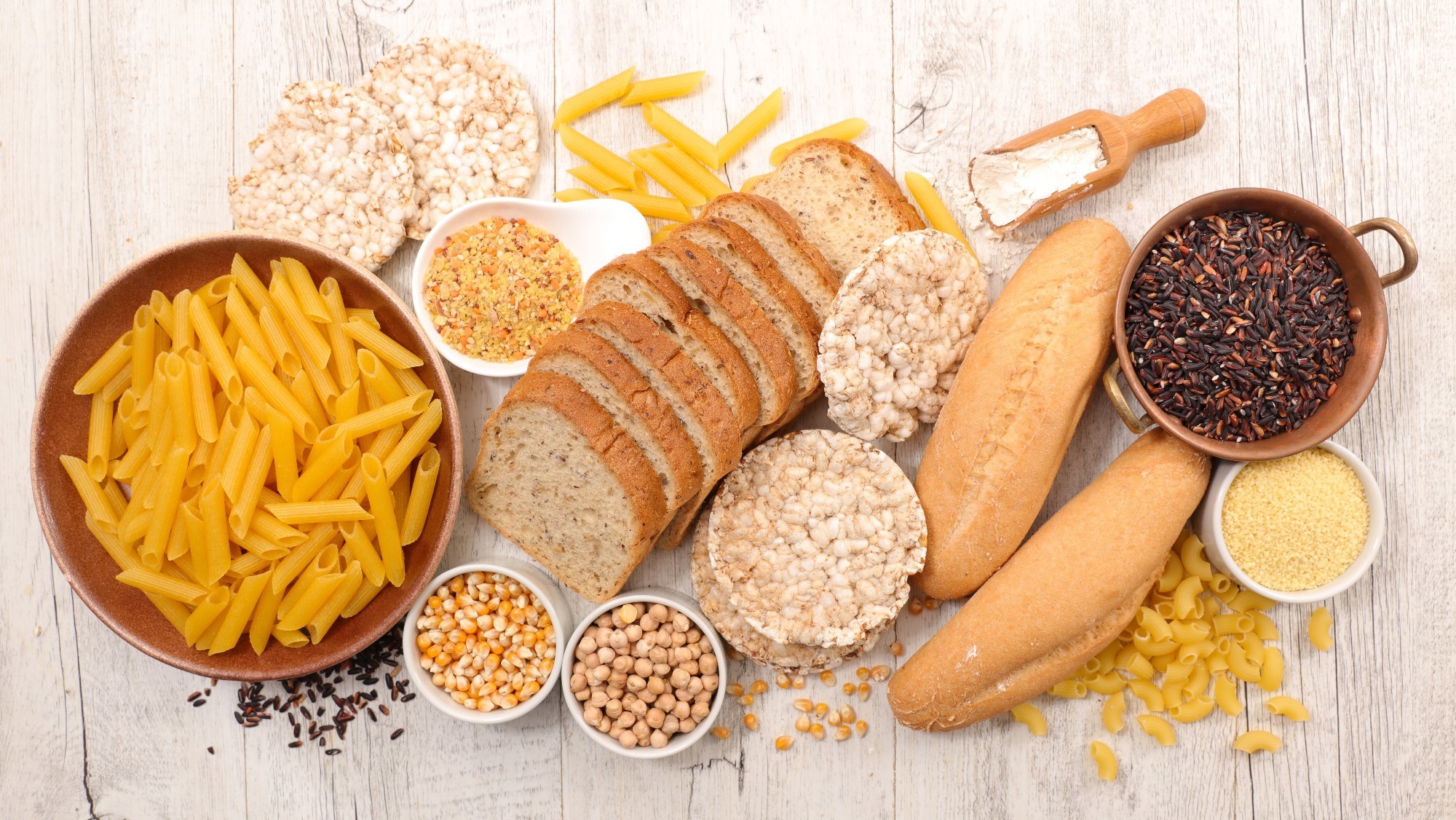Low-gluten diets disrupt gut health by depleting key bacteria

Scientists reveal a protracted interval of gluten, which is usually seen as a wholesome enhance, can disturb the intestinal stability, strip the principle microbes, and result in the buildup of ethanol related to irritation and metabolic dangers.
 Tickets: Following a low gluten diet reduces the abundance of bacteria that are likely to be useful in healthy intestine microbes. Credit score Picture: Margouillat Photograph/Shutterstock.com
Tickets: Following a low gluten diet reduces the abundance of bacteria that are likely to be useful in healthy intestine microbes. Credit score Picture: Margouillat Photograph/Shutterstock.com
A examine printed in Nutrients Evaluating whether or not the low eating regimen, over lengthy intervals, impacts the operate of the small gut and the formation of wholesome adults.
Gluten and intestinal microbes
Gluten is a serious eating regimen for wheat, consisting of huge peptides similar to ice and glutenin. It’s troublesome for human intestinal prolets to destroy these giant peptides, in order that they escape digestion and urge adjustments throughout the intestinal microbes. Gluten has been related to some illnesses, together with non -kwelic gluten allergy, digestive issues, and gluten.
People who adopted a gluten -free way of life have reported digestive consolation, bettering weight administration and basic properly -being. Nevertheless, the proof for these well being advantages in wholesome people remains to be not current, and gluten will also be dietary dangers and metabolism for many who would not have gluten -related issues.
One examine confirmed that one 12 months after the adoption of a LGD (LGD) eating regimen or gluten -free eating regimen, sufferers with digestive issues had been larger. The risk of metabolic syndrome. The higher blood sugar indicator for a lot of gluten -free meals can push this. These dangers require lengthy -term comply with -up, because the eating regimen -dependent transformations within the microorganisms of the gut can contribute to the outcomes of damaging metabolism.
About examine
This examine carried out a random experiment ruled to evaluate the consequences of LGD’s steady publicity to composition and metaphysical exercise of intestinal microbes in a pattern of 40 wholesome adults in France. The examine pattern included women and men who eat a median of 160 grams of bread and pasta per day, and it meets about 14 to fifteen grams of gluten of those meals.
Volunteers have became LGD from their normal excessive -gluten eating regimen (HGD) for 2 consecutive intervals of 8 weeks. The design of the examine necessitated a set of 40 Berizer samples (M0), after 8 weeks of LGD (M2). Furthermore, 20 Brazie samples had been collected 16 weeks after LGD (M4). The 16S RRNA genes sequence methodology was used to check the composition of the microorganisms gut, and the PCR was used to estimate the amount. To estimate the metabolic capability of the intestinal microbes, the bolts had been measured by the nuclear magnetic resonance proton (1H Magnetic nuclear resonance).
Research outcomes
A complete of 1742,283 16s was obtained by the Ribasian RNA studying from stool samples from the matters after HGD or LGD. Throughout LGD intervals, the richness within the range of alpha for the microbial bowel neighborhood fell considerably, and this lower was larger after 16 weeks after 8 weeks, indicating a time -based exacerbation. Relating to the variations in range β in M0, M2 and M4, a transparent meeting of the microbial inhabitants was noticed in LGD intervals. Microbial societies in M2 and M4 fashioned related teams, that are very completely different from the M0 relating to range β.
On the stage of Phylum, relative abundance Verrocomicrobiota and Actinomyita It was dramatically diminished in M4, relative to the M0. Concurrent, Bacterid and Bacillota The degrees have elevated considerably. Nevertheless, the ratio Bacillota to Bacterid It stays unchanged, which the authors discover as a slight distinction. On the household stage, Veillonelceae It elevated considerably in the identical interval, whereas Akkermansiaceae He decreased dramatically.
Regardless of the excessive distinctionBifidobacterium He decreased dramatically by QPCR (P = 0.0021), inflicting some comparisons to lower in statistical significance in sequence knowledge. The molecular quantitative measurements didn’t reveal any adjustments in bacterial species Escherichia coli and Faecalibacterium prausnitzii and lactobacillus-pidiococcus group.
After LGD, and and Bacteroidia, VerroComicrobiaeAnd Clostridia The layers had been noticed within the abundance of differentials on the stage of species. Akkermansia Muciniphila He decreased dramatically in M4. Lachnobacterium BovisAnd there are kinds of lactate, as they refused. On the identical time, some butter producers, similar to Rospur and CakeElevated, which the authors seen helped preserve secure butter ranges regardless of societal transformations.
The degrading kinds of fiber, together with R. Calidos and Ruminococcus CHAMPANELENSISIt was additionally drastically affected by the M4. EUBACTERUM SP. and Caecimuris Plutia, That belongs to Lachnospiaceae The household, decreased in M4. the Lachnospiaceae The household consists of many kinds of butter.
After LGD, and and Enterobacteriaceae The inhabitants has elevated 10 instances, whereas the extent of the whole erasers within the inhabitants remained just like the M0. When assessing the extent of gluten society, a lower of 10 instances in M2 is noticed. Enterobacteriaceae, Which may embody the species produced for ethanol ColaIt could contribute to inflammatory processes whether it is inflated.
There was no important distinction within the focus of Al -Barazi fermentation between M2 and M4. In M2, there was a slight lower within the ratio of acetate, in favor of probionate. The proportion of ethanol elevated by greater than thrice in M2 and M4. The buildup of ethanol is the principle white crimson flag, the place the manufacturing of extra ethanol is related to metabolic and intestinal syndrome ignition.
This contradicts the numerous lower in ISOBUTYRATE in M4, however not M2. Regardless of the microbial shifts, the degrees of whole acetate, propens, and butter remained largely secure, which the authors attribute to the power to provide extra butter between completely different bacterial gadgets.
Many of the predominant strains of gluten belong to the class of Clostridia. As well as, one remoted to ActinomyitaTwo of GammaproteobacteriaAnd three l Erysipelotricha. 5 strains belong to Lachnospiaceae The household between the class Clostridia. Household isolation Oscillospheraceae It’s recognized FLAVONIFRACTOR PLAUTII. In three matters, strains belonging to Erysipelotrichaceae The household was noticed.
Conclusions
LGD has modified the composition of the gut for 16 weeks and metabolism exercise in a pattern of wholesome French adults, which ends up in a shift in dyslexia. Many of those adjustments might consequence from decreasing gluten and switching to meals based mostly on rice and corn that change the content material of fiber and polyphenols in comparison with wheat.
Lengthy -term research can discover their impact on immunity, physiology and metabolism. Nevertheless, the outcomes point out that the continual LGD of wholesome people can progressively weaken the stability of the small gut and lift the degrees of ethanol, which can pose metabolic dangers.
Download your PDF version now!
Journal Reference:
- Delmas, e. et al. (2025) A low gluten eating regimen reduces the abundance of micro organism which are prone to be useful within the microorganisms of the grownup gut. Vitamins. 17(15), 2389. https://www.mdipi.com/2072-6643/17/15/2389
2025-07-24 10:33:00





